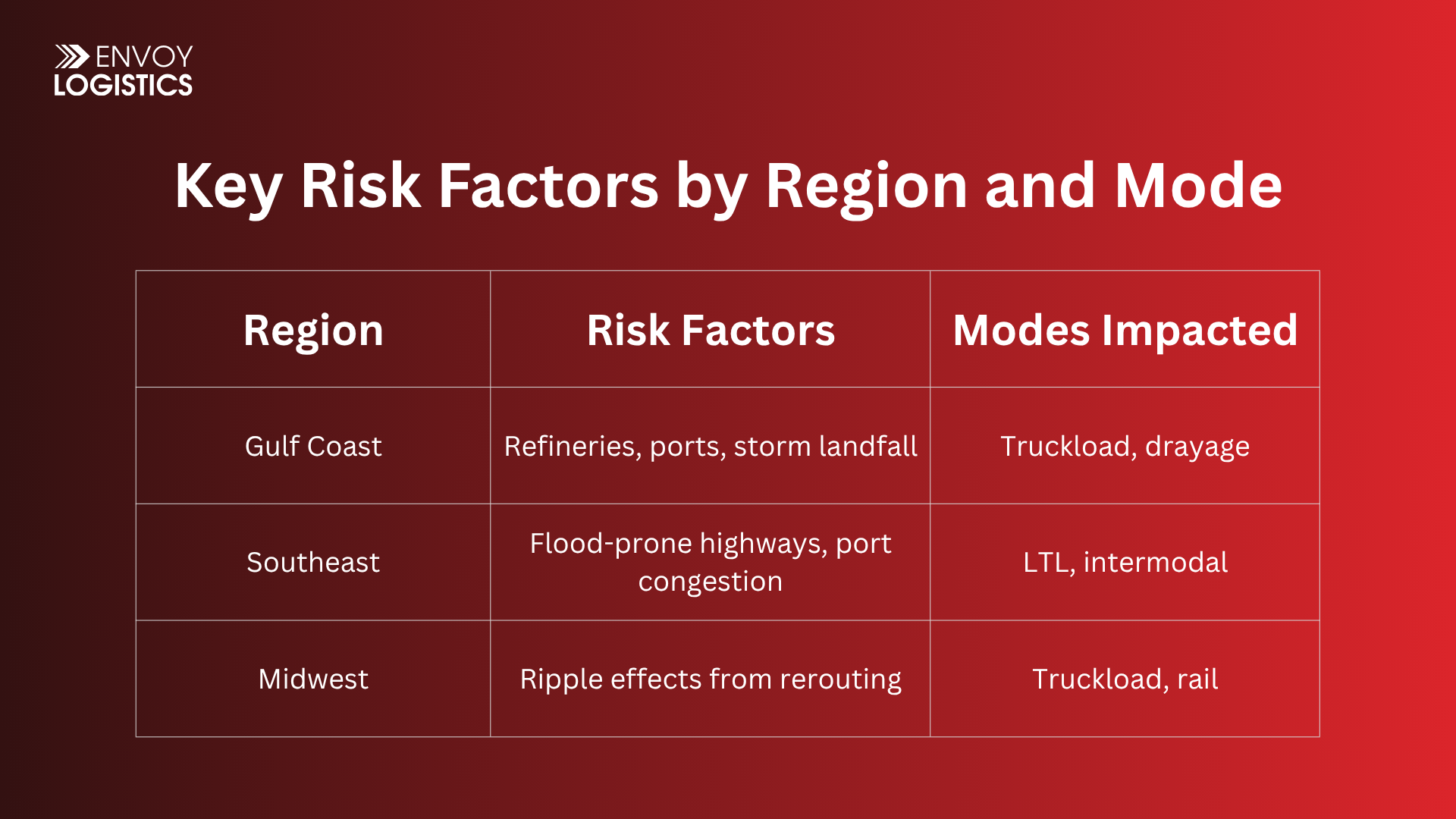Fuel Spikes + Hurricane Season = Unstable Freight Rates: Why Shippers Should Brace for a Bumpy Ride
As summer heats up, so does the volatility in freight rates—and it’s not just the temperature causing the spike. With diesel prices climbing and NOAA forecasting an above-average hurricane season, shippers are facing a perfect storm of cost and disruption. Let’s break down what’s happening, who’s most affected, and how to stay ahead of the curve.
Fuel Prices: The First Domino
Diesel costs remain elevated due to low inventories and refinery vulnerabilities—especially along the Gulf Coast, where hurricane season poses a direct threat to production. According to Yahoo Finance, ULSD futures have climbed over 10% since mid-June, signaling investor concern about supply disruptions.
Hurricanes = refinery shutdowns → reduced supply → price spikes
Higher fuel costs ripple through every mode: truckload, LTL, drayage, and even air freight
Fuel surcharges are recalculated weekly, meaning shippers can see sudden cost increases mid-contract
Hurricane Season: The Wild Card
NOAA’s 2025 outlook predicts 13–19 named storms, with 3–5 major hurricanes likely to form. USA TODAY and Colorado State University echo concerns about warming Atlantic waters and favorable storm conditions—especially in the Gulf and Southeast.
Port closures in the Southeast and Gulf Coast can delay imports and exports
Flooded roads and infrastructure damage slow down ground transit
Capacity crunches as carriers reroute or avoid high-risk zones
Who’s Most Affected?
Certain regions and modes are especially vulnerable when fuel and weather collide:
What Shippers Can Do Now
Risk planning isn’t just for insurance adjusters—it’s a strategic advantage. Here’s how to soften the blow:
Diversify carrier networks to avoid overreliance on storm-prone regions
Build buffer time into transit schedules to account for delays
Lock in fuel surcharge caps where possible to reduce exposure
Use real-time tracking to reroute shipments proactively
Lean on 3PLs like Envoy Logistics for flexible solutions and contingency planning
Final Thought
Fuel spikes and hurricanes may be out of your control—but your response isn’t. By understanding how these forces interact and preparing accordingly, shippers can turn volatility into opportunity. At Envoy Logistics, we help you navigate the storm with smarter planning, stronger partnerships, and real-time visibility.
Don’t wait for the next storm to hit. Fuel costs and weather disruptions are already impacting freight rates.
Let Envoy Logistics help you stay ahead with contingency planning and mode flexibility. Contact us today to build your storm-ready strategy.
Sources & Further Reading
NOAA 2025 Atlantic Hurricane Season Outlook Official forecast detailing expected storm activity and regional risks.
Yahoo Finance: Benchmark Diesel Price Down, But Fundamentals Are Pointing Higher. Analysis of diesel market trends, refinery vulnerabilities, and pricing outlook.
USA TODAY: Hurricane Season 2025 Forecast Overview of expected storm patterns and their potential impact on infrastructure and logistics.
Colorado State University Tropical Meteorology Project Long-range hurricane predictions and historical storm data used by logistics planners.

